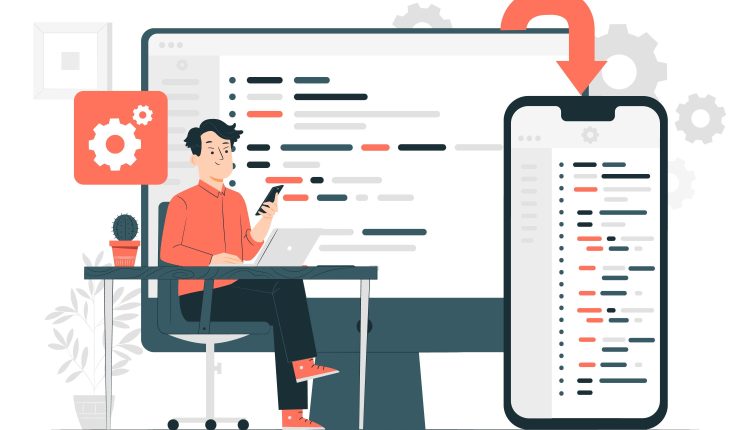Software engineers today have the tools to build robust, scalable software applications that can handle billions of users. The modern developer has access to cloud-based infrastructure and various open-source tools for building highly scalable applications. Today, we’ll look at critical IT infrastructure components that make modern software development possible.
1. Docker containers
Docker is a containerization technology that has become an essential part of modern IT infrastructure. It’s used by nearly every organization in the software development industry, and it plays a central role in many DevOps processes. For more information, you can visit JFrog; they have a detailed guide on Docker.
Here are some of the benefits of Docker for software developers:
- Lightweight and portable – Containers can run on any Linux operating system, whether on your laptop or a fleet of servers. This makes them easy to distribute across different environments, even if they vary widely in size or purpose.
- Fast – They’re lightweight enough to be run on your local computer without slowing down your work environment (and since Docker containers contain only what they need for their specific function, there’s no need for you to install any additional software). Their quick startup times make them ideal for continuous integration testing cycles during which developers continuously integrate code changes with complete regression testing after each commit.
- Shareable – By being based on open source standards (Open Container Initiative standards), Docker containers are easy to share across teams and companies as needed—without having to worry about compatibility issues between versions (since all activity happens within isolated environments).
2. Kubernetes
Kubernetes is an open-source system for automating containerized applications’ deployment, scaling, and management. Kubernetes was initially designed by Google and has since been adopted by the wider community. It’s used by Google, Amazon Web Services (AWS), Microsoft Azure, and many other organizations as part of their container management platform.
Kubernetes is a crucial component of the modern IT infrastructure because it allows us to run our applications on cloud services without having to manage them ourselves.
3. Serverless computing
Serverless computing is a type of cloud computing where the cloud provider dynamically manages the allocation of machine resources. Serverless systems are highly scalable and can be used to build and run applications that require little management.
Services provided by serverless platforms include:
- FaaS (Function-as-a-Service) runtimes allow you to run your code in ephemeral containers that automatically delete when you stop using them, making it easy to scale up or down as needed. These services may also provide access control lists (ACLs), so you can limit which users can access specific functions and what they can do once they’re granted access.
- BaaS (Backend-as-a-Service) services operate on top of AWS Lambda, Google Cloud Functions, Azure Functions, etc., enabling application developers to focus on building their apps. At the same time, these platforms take care of scaling infrastructure for them automatically based on demand for their product across different regions around the world.
4. NoSQL databases
NoSQL databases are a type of database that is not fully relational. Relational databases store data in tables and columns, whereas NoSQL databases generally store data in documents or key-value pairs. They’re designed to store and retrieve data flexibly and scalably,
NoSQL databases are often used for big data applications because they can easily handle large amounts of unstructured information. This makes them an excellent choice for web applications that use much user-generated content like social networks or other collaborative tools where users can input their data into the system (like customer reviews).
5. Data lakes
Data lakes are a storage mechanism for big data, and they store data from multiple sources. Data lakes can store raw data, processed data, or both. You would want to store your data in a lake so that it can be accessed by other applications such as analytics software or machine learning algorithms (such as deep learning).
6. Artificial intelligence, machine learning, and deep learning
Artificial intelligence (AI) is a set of technologies used to create intelligent machines. Examples include chatbots and virtual assistants, but AI has many other applications. For example, it’s used in autonomous vehicles such as self-driving cars.
Machine learning is one component of artificial intelligence; it’s an approach for dealing with problems when you can’t define the exact answer in advance. The idea behind machine learning is that by analyzing data from large amounts of information—such as credit card transactions or weather patterns—you can teach an algorithm to recognize patterns and make predictions about future events based on what happened before.
Deep learning is another component of artificial intelligence; it refers to using algorithms that allow computers to learn from examples without being explicitly programmed where they should look for patterns or identify objects within images or video clips.
Combined, all three of these types of AI have become a growing part of the digital world, helping to bring about what many consider to be the next era of computing.
The technologies we’ve covered in this article are just some of the many that have emerged in recent years to meet the needs of modern software development. But as you can see, there is no shortage of options for supporting your application development efforts. Depending on your specific needs and workflows, you may even need a combination of these technologies.


